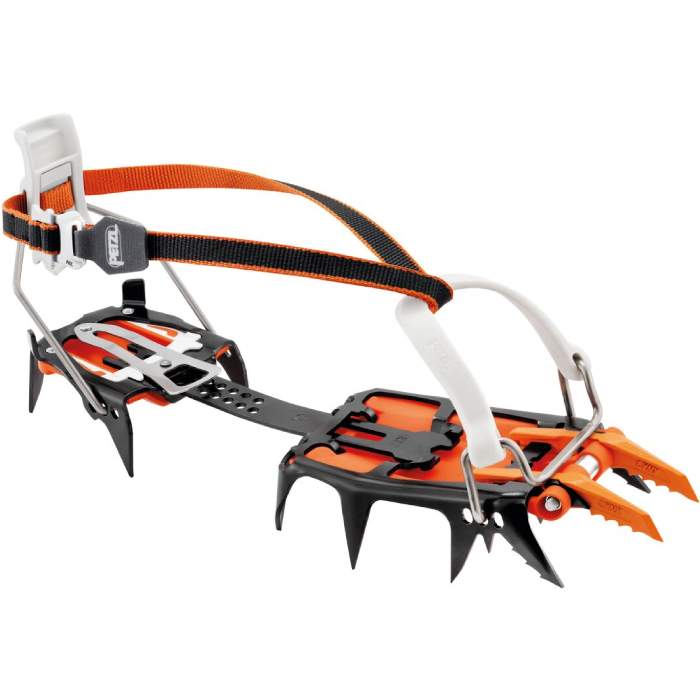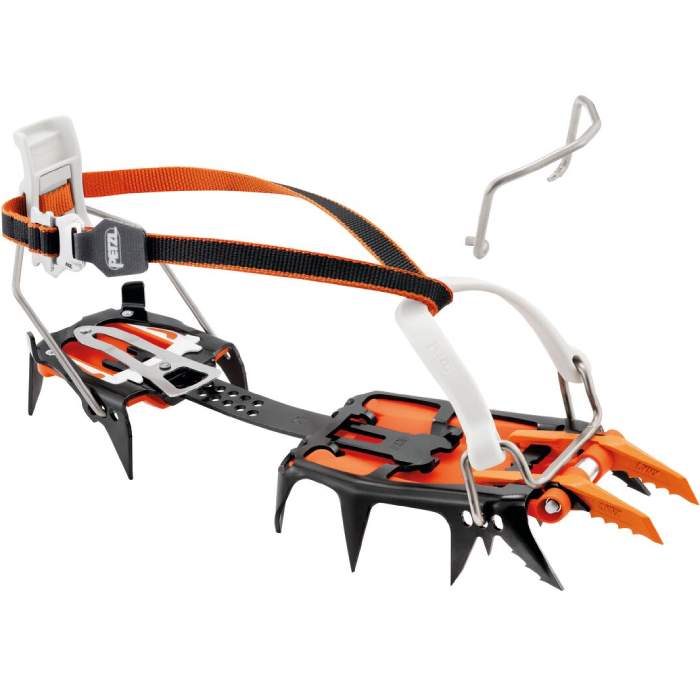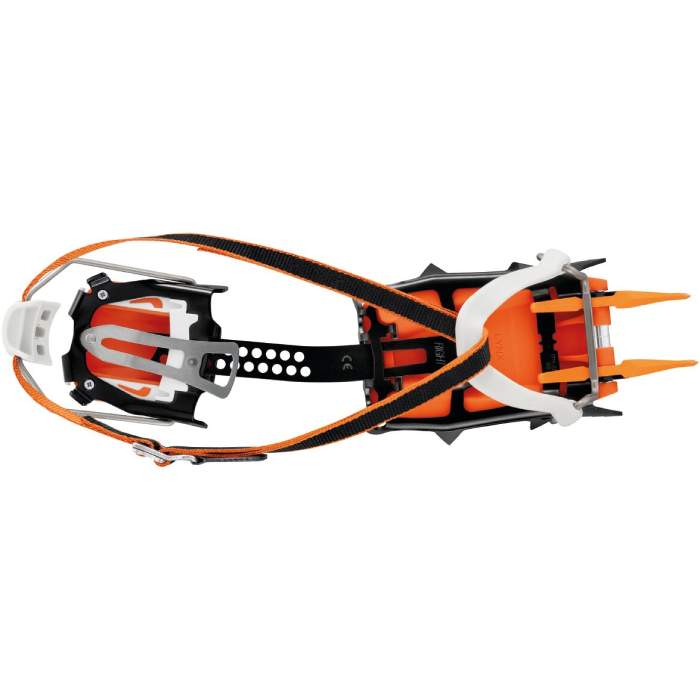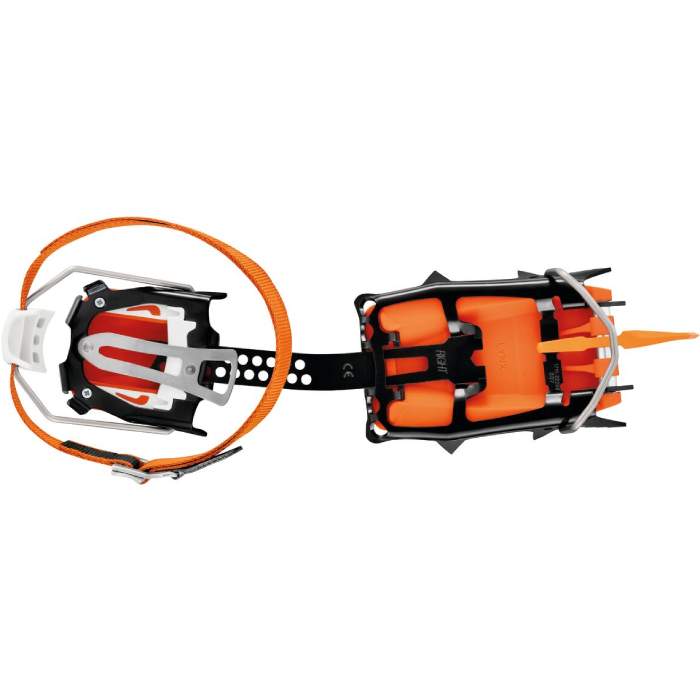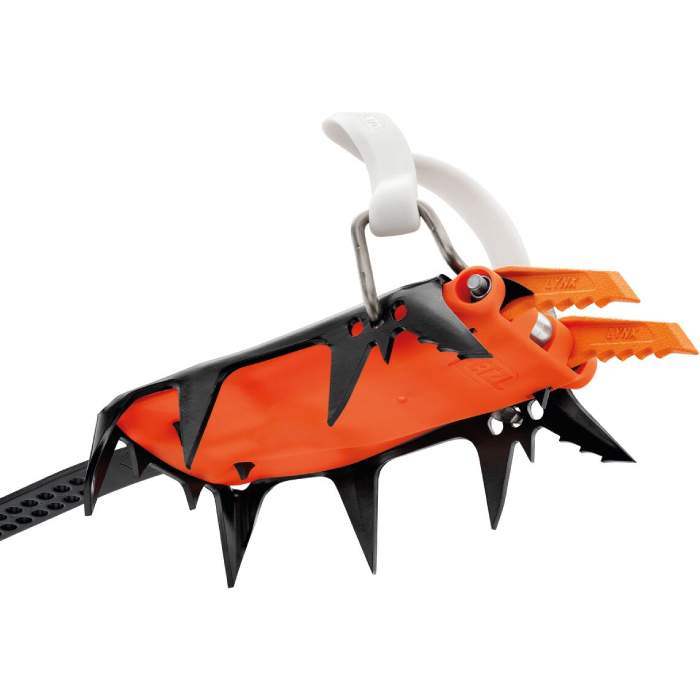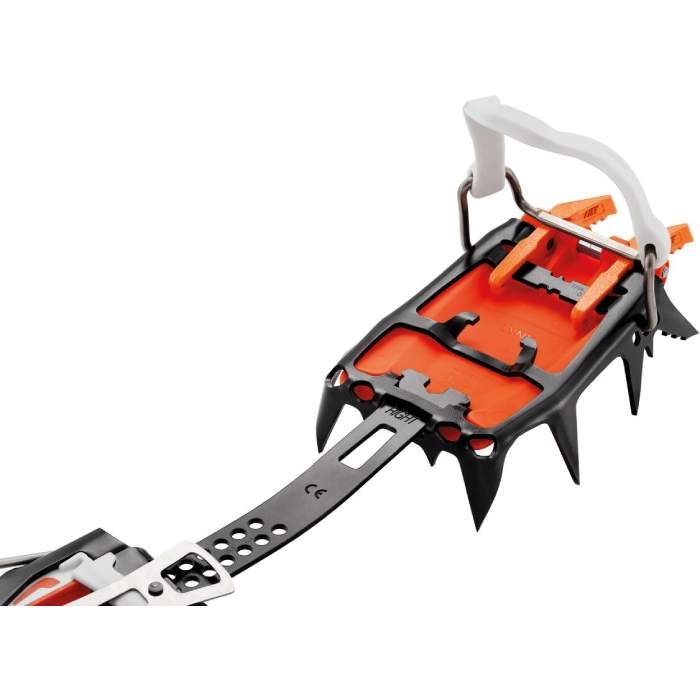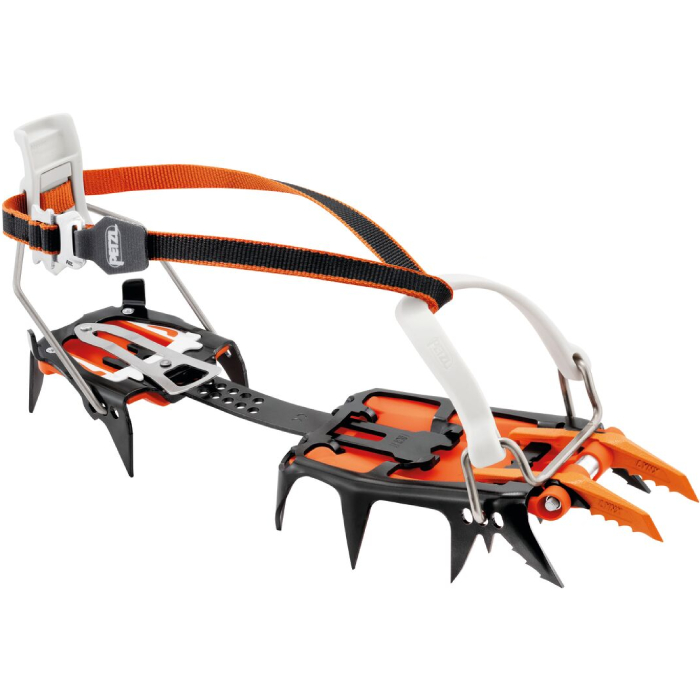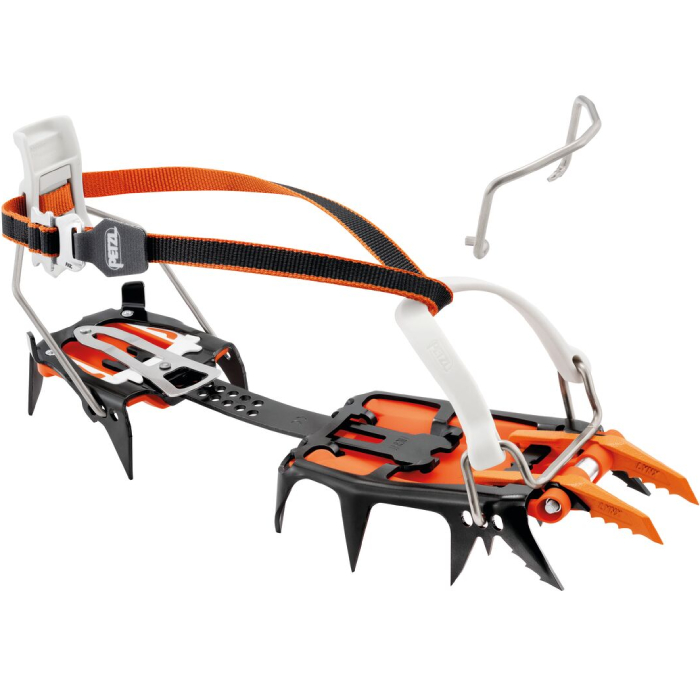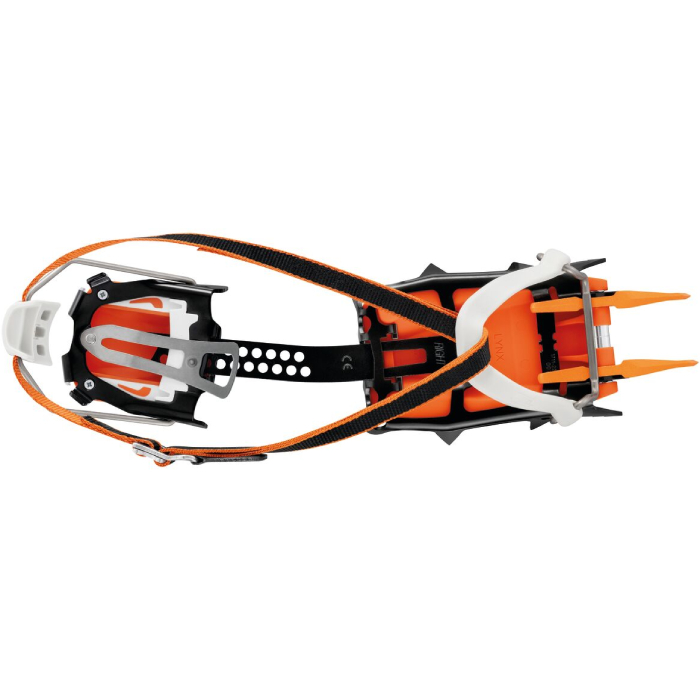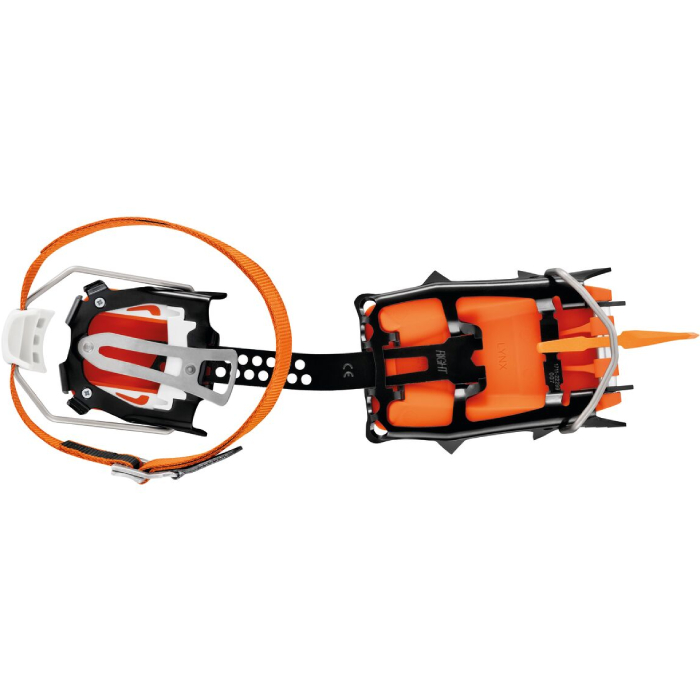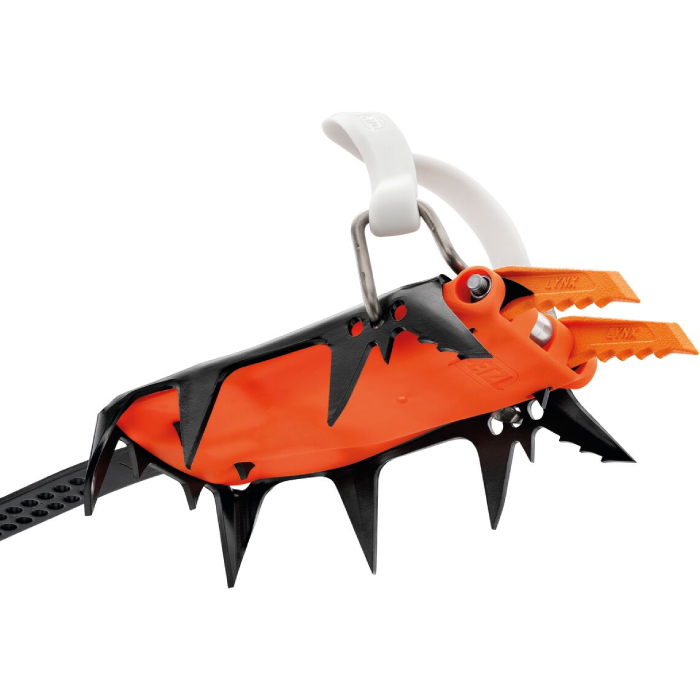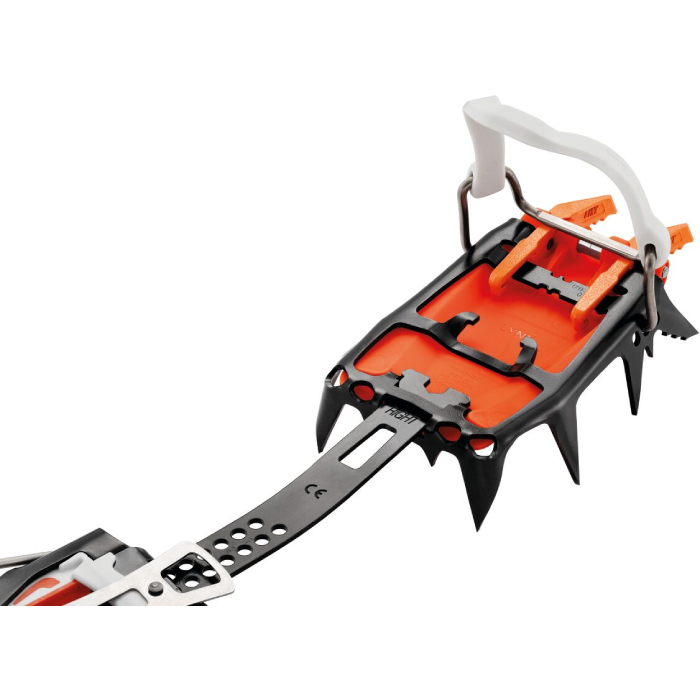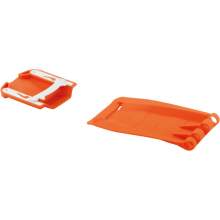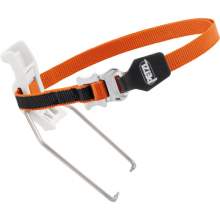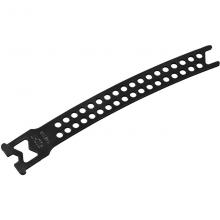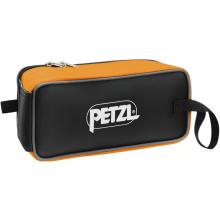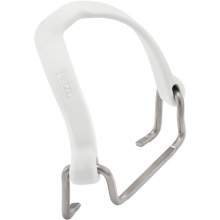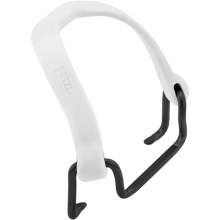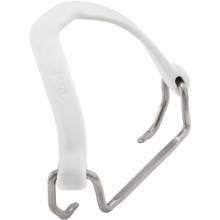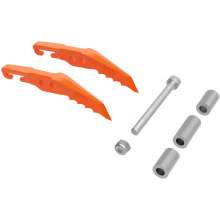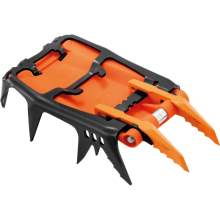Describes with words and helpful photos, how to protect your crampon.
Lynx
Description
Modular crampons designed for ice climbing, technical mountaineering, and mixed climbing.
- 14-point crampons designed for ice climbing, mixed climbing, and technical mountaineering:
- Interchangeable, toothed front points for excellent bite on ice and mixed terrain
- Points are distributed to provide stability and traction on a variety of different types of ice
- Stable support on many different types of ice (cauliflower, chandelier), due to 8 secondary points and the mono-point
- ANTISNOW LYNX system helps limit snow buildup in a variety of snow conditions
- Steel crampons for maximum durability - Versatile:
- Length of front points can be adjusted with one screw (Petzl patent)
- Dual-point configuration that can be easily converted to mono-point: dual-point for snow couloirs and gullies, asymmetrical dual-point for pure ice, short mono-point for ice, and long point for mixed
- LEVERLOCK UNIVERSEL binding system is designed to fit most footwear with heel welts
- Bi-position linking bars for a large range of boot sizes (from 37 to 49)
- Tool-free length adjustment - Completely modular ALPEN ADAPT system:
- Front points, front sections, linking bars, antibott system, and bindings can be replaced separately
- FIL or FIL FLEX bindings, to fit the front of most footwear (with or without toe welts)
- Compatible with all toe bails to fit most footwear, with or without toe welts: stiff, flexible, telemark boots, snowboard boots
- Compatible with the KIT CORD-TEC for a lighter weight and more compact size - Material(s): Steel, stainless steel, aluminum, nylon
Retail price
When you click a link below and then checkout online, no matter what you buy (climbing gear or not), we get a small commission that helps us keep this site up-to-date. Thanks!
Weight per Pair (g / oz)  Weight per Pair (g / oz)In grams and ounces, the weight of both crampons together, as stated by the manufacturer/brand. If there are differences in weight (due to multiple sizes or optional accessories) we'll note those here. | 965 g / 34.04 oz FIL: 935 g / 32.98 oz
FIL FLEX: 965 g / 34.04 oz
|
| Ideal Uses | Technical Mountaineering / Alpine Waterfall Ice Mixed (Rock & Ice) / Dry Tooling |
| Binding System | Automatic Semi-auto |
| Sizing | One size fits 37-49. |
| Front Points | Vertical Mono / Dual |
| Front Point Offset | Yes, Adjustable |
| Number of Points | 14 |
| Main Material | Steel, stainless steel, aluminum, nylon |
| Wear Indicators | No |
| Anti-Ball Plates | Included |
| Crampon Case | Sold Separately (see the case here) |
| Heel Spur Attachment | None made for this model |
Certification  CertificationsThe main climbing gear certifications are CE and UIAA--and normally the UIAA creates the rules that the CE body also supports. When possible, we try to list all the certifications the product carries. To sell a climbing product in Europe, the device must be CE certified. There are no official requirements to sell climbing gear in the US. The UIAA certification is a voluntary process. Learn MoreRock and Ice Certifications Guide |
CE, EN, UIAA |
No reviews yet.
A checklist helping you monitor your crampon health, helping to know when to retire your crampon.
Helpful instruction for inspecting Petzl crampon.
How to use Petzl crampon correctly, maintenance, general information with instructional pictures.
The UIAA equipment standard provides a baseline for equipment performance in a test lab under controlled conditions on new equipment. Although these test conditions are relevant to the conditions encountered climbing, conditions encountered at the crags and the condition of the equipment are equally important. This recommendation from the UIAA member federation The British Mountaineering Council (BMC) provides vital equipment information that is NOT explicitly addressed in the standard, particularly failure modes of the equipment and recommendations for the use, inspection, maintenance, and retirement of equipment.
A pictoral representation of the UIAA-153 and EN-893 standards for crampons.

